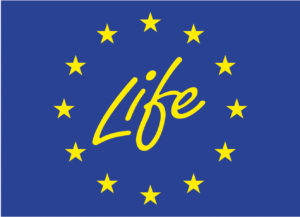Five bison reintroduced into the Southern Carpathians rewilding area in Romania in 2019 were fitted with GPS collars. This technology is helping the local rewilding team to promote coexistence and make more informed decisions.
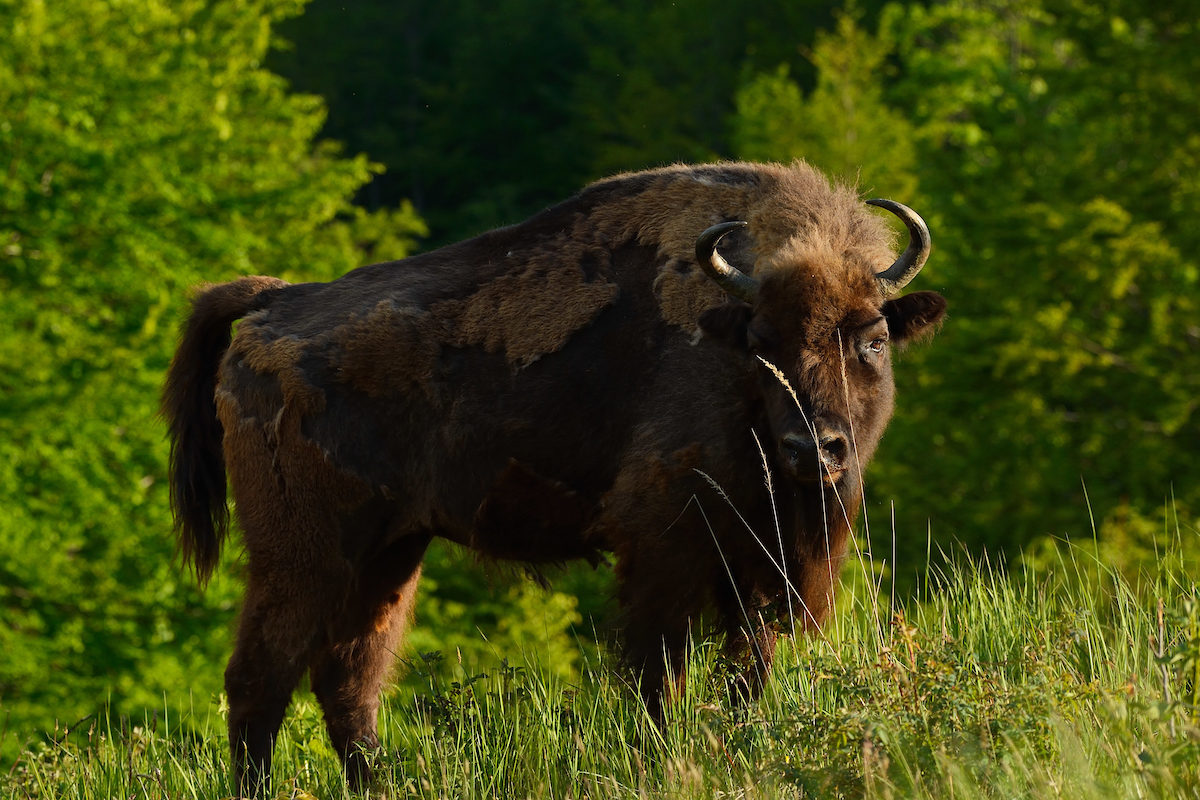
Transformative tech
European bison can roam up to 15 kilometres a day as they look to satisfy their hefty appetites. Reintroducing these animals into an environment where they may encounter people, and human sources of food, means keeping track of their movement is both challenging and essential.
In the Southern Carpathians rewilding area in southwest Romania, the use of GPS collars is making this task far easier, aiding the local rewilding team in their efforts to promote co-existence, saving time and money, and facilitating the collection of valuable data.
Better rewilding outcomes
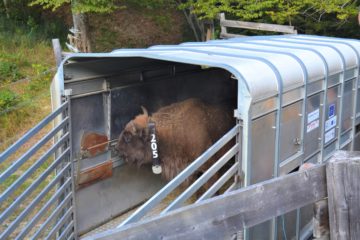
When a herd of bison were reintroduced into the rewilding area last June, two male bison and one matriarch (the head female) were fitted with GPS collars. Two more collars were also fitted to female bison reintroduced in September.
During the winter, when the males separate from the main herd, and in the summer, when they rejoin, the collars allow the rewilding team to keep track of the entire group. If the bison wander too close to local villages then rangers can intervene and divert them.
“This not only saves us a lot of effort in the field, it also means we can keep relations between local villagers and bison harmonious,” explains bison ranger Matei Miculescu.
The rewilding team regularly shares information and insight gathered from the bison monitoring through local village meetings, leaflets and posters, and via rangers in the field. The local mayor and authorities are also kept updated.
Fenceless boundaries
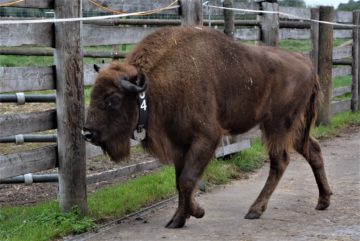
The GPS collars fitted to the five reintroduced bison are equipped with a useful tool called Virtual Fence, which allows the rewilding team to customise the way data is collected in certain predefined areas.
Whenever the collar sends a GPS signal it checks automatically if the animal is within or outside one of these areas (effectively inside or outside the virtual fence). This information is stored in the collar memory, and can also trigger a warning signal. This is the first time such technology has been deployed in Romania.
“Until now we have defined one virtually fenced area and have received about 30 SMS alerts,” says Miculescu. “Luckily no intervention has been required because the bison have moved away of their own accord.”
To protect property from bison damage the Southern Carpathians rewilding team has fitted a small number of electric fences in the rewilding area, mostly in the abandoned village of Plopu. Some local people still maintain orchards here, and also haystacks over the winter months.
Collars and collection
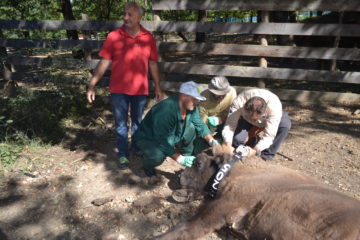
The highly durable GPS collars were fitted to the five bison just before they were transported to the rewilding area, as they were tranquilised to conduct health checks. Customised for each animal, they were fitted very carefully, with enough slackness to allow for growth.
Made by German company VECTRONIC Aerospace, the collars are equipped with the latest GPS technology and batteries that can last up to four years. They also have a remotely operated emergency drop-off system, which can be activated if the animal is injured or dies, or if the battery stops working.
Thanks to the signals from the GPS collars the rangers were able to visit various bison herds several times during the winter and spring, despite the challenging terrain and weather. As well as facilitating general monitoring, knowing exactly where the bison are allows the rewilding team to collect faeces and other samples more easily. These are periodically sent to the University of Agricultural Sciences and Veterinary Medicine of Cluj-Napoca for analysis, with the results helping to evaluate bison health and genetics.
All the information collected from the collars is automatically stored in a database and analysed using statistical methods and GIS. Bison rangers who are observing the animals in the rewilding area will soon be able to use an updated data collection app, linked to this database and featuring a wide range of data fields.
Fascinating findings
In addition to promoting coexistence, the collected data will also give the rewilding team a better understanding of bison behaviour.
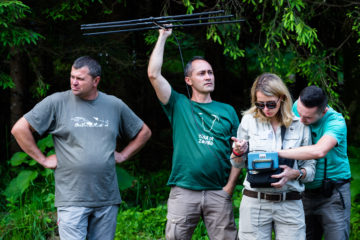
“This will allow us to make more informed rewilding-related decisions in the future,” explains Miculescu.
GPS collars manufactured by another company (without the virtual fence feature) were fitted to reintroduced bison in the Southern Carpathians between 2014 and 2018. The data they have generated has already thrown up some interesting results.
One female bison was found to have roamed across a 94,000 hectare (940 square kilometre) expanse of the Southern Carpathians from the time of her release in 2017 until 2019. The old collars also revealed that some of the reintroduced bison reached an altitude of 2132 metres on their wanderings – this is the highest recorded height for European bison, which were thought to prefer lower altitudes.
The rewilding team will continue to collect data from the new collars, and are aiming to publish their findings by the end of 2021.
Record-breaking return
Building on a history of reintroductions in other countries, Rewilding Europe and WWF Romania have been working to reestablish free-roaming populations of European bison in the Southern Carpathians of Romania for the last six years. This record-breaking reintroduction programme became the LIFE Bison project in 2016.
Want to know more?
- What to do when you encounter a bison
- Rewilding Europe in the Southern Carpathians
- LIFE Bison project
- Bison tracking with the European Safari Company
- Rewilding Southern Carpathians Facebook page

